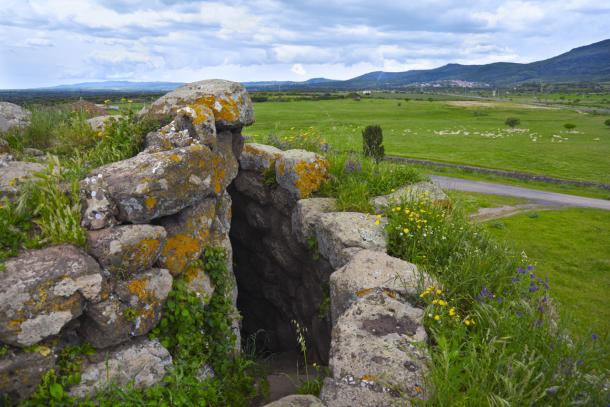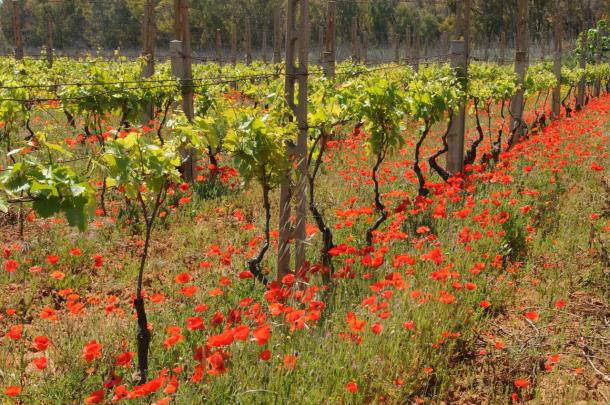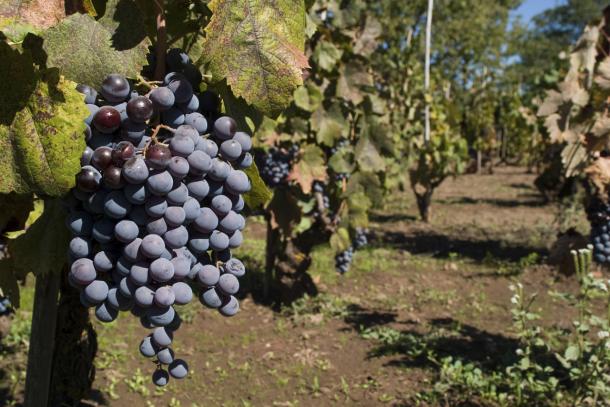The Wines of Sardinia (Sardegna)
Sardinia’s wines have little in common with those produced in the rest of Italy. The Island’s remote Mediterranean location, as well as the historic influence from other cultures, gives the wines a unique character that might be considered to have more in common with Spanish than Italian wines.

Sardinia’s white wine industry is characterised by grapes that are seldom seen in other parts of Italy, like the prolific Nuragus, as well as clones of classic Mediterranean varietals like Moscato and Malvasia. Nuragus is a grape of historical significance – it is thought that the Phoenicians brought the grape to the island, which takes its name from nuraghe, the ancient stone towers that have come to symbolise the island. While crisp wines made from Nuragus are popular locally, wines made from Vermentino, often bottled as Vermentino di Sardegna DOC, have more commercial appeal. Vermentino is now widely planted, making clean, fresh wines, such as the dry Vermentino di Gallura, Sardinia’s sole DOCG appellation.
Historically, whites were produced in high volume with relatively high alcohol, although more recently Sardinia’s producers have been reducing yields in order to focus on quality rather than quantity. This shift was a more recent phenomenon in Sardinia than in other parts of Italy, with many winemakers reluctant to change their methods in order to seek out commercial success. Quality has prevailed, and now in addition to the single DOCG, there are 19 DOC appellations. Sardinia also has 15 IGTs, which is more than any other region in Italy.

Production is extensive around the port of Cagliari in the Campidano area, where the little known Girò, Monica, Nasco and Nuragus varietals grow alongside Malvasia and Moscato, all bearing the town name in the Girò di Cagliari, Monica di Cagliari, Nasco di Cagliari, Nuragus di Cagliari, Malvasia di Cagliari and Moscato di Cagliari DOCs. Moscato wines are sweet and often sparkling, while Malvasia may be either dry or sweet. The best examples tend to be dry wines made around Cagliari, as well as those from the Planargia hills and the town of Bosa, which boast its own Malvasia di Bosa DOC.
Perhaps Sardinia’s most unique wine, the amber-coloured Vernaccia di Oristano, is made around the basin of the Tirso river in a method similar to Fino Sherry production. The wine is aged in barrels in which a yeast flora forms on its surface that flavours the wine richly. A fine sweet white is often bottled under Sardinia Semidano DOC, although the most prized examples are made around the town of Mogoro.
Many of Sardinia’s red wines also show the Spanish influence on the island. Cannonau is an important varietal, a grape that is related to Spain’s Garnacha. Cannonau, as well as Monica, another grape of Spanish origin, are used to make both dry and sweet wines, although winemakers are moving away from the sweet, strong style in favour of quality dry wines. Similarly the Spanish Carignano grape performs well, with some excellent wines emerging from the DOC of Carignano del Sulcis in the South West.

Cannonau dominates in the eastern coast around Nuoro where strong, concentrated dry reds are made under the appellation Cannonau di Sardegna DOC. Aged for at least one year in oak barrels, or at least two years for reserve wines, some fine examples come from Oliena, Jerzu and Capo Ferrato. A port-like sweet wine is also made, indicated by the term liquoroso on the label and reaching at least 17.5% alcohol.
Sardinia DOCG wine appellation:
Vermentino di Gallura or Sardegna Vermentino di Gallura
Sardinia DOC wine appellations:
Alghero or Sardegna Alghero, Arborea or Sardegna Arborea, Campidano di Terralba or Terralba or Sardegna Campidano di Terralba or Sardegna Terralba, Cannonau di Sardegna, Carignano del Sulcis or Sardegna Carignano del Sulcis, Girò di Cagliari or Sardegna Girò di Cagliari, Malvasia di Bosa or Sardegna Malvasia di Bosa, Malvasia di Cagliari or Sardegna Malvasia di Cagliari, Mandrolisai or Sardegna Mandrolisai, Monica di Cagliari or Sardegna Monica di Cagliari, Monica di Sardegna, Moscato di Cagliari or Sardegna Moscato di Cagliari, Moscato di Sardegna, Moscato di Sorso-Sennori or Moscato di Sorso or Moscato di Sennori or Sardegna Moscato di Sorso-Sennori or Sardegna Moscato di Sorso or Sardegna Moscato di Sennori, Nasco di Cagliari or Sardegna Nasco di Cagliari, Nuragus di Cagliari or Sardegna Nuragus di Cagliari, Sardegna Semidano, Vermentino di Sardegna, Vernaccia di Oristano or Sardegna Vernaccia di Oristano
Sardinia IGT wine appellations:
Barbagia, Colli del Limbara, Isola dei Nuraghi, Marmilla, Nurra, Ogliastra, Parteolla, Planargia, Provincia di Nuoro, Romangia, Sibiola, Tharros, Trexenta, Valle del Tirso, Valli di Porto Pino
Learn more about:
The Food and Cuisine of Sardinia (Sardegna)
